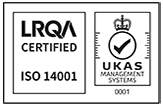
As the realisation of the ever-increasing waste crisis slowly creeps into our everyday psyche, it spurs us to make more sustainable choices, waste less, and recycle more. As we understand the impact of waste, it affects the buying choices we make – including clothing.
Consumer demand for sustainable fashion is emerging. It’s not uncommon to see trending topics on social media relating to making sustainable choices when it comes to style, such as #slowfashion, #consciousfashion and #buywell. But how do we make more sustainable clothing choices to reduce our impact on the environment?
Why is sustainable fashion important?
We’ve lived through an era of so-called fast fashion. It’s where retailers, desperate to keep up with catwalk trends and sell more clothes, have a constant turnover of fresh stock at accessible prices. Cheap garments might be worn once, then disposed of, in the name of ever-evolving trends. In turn, 350,000 tonnes of unwanted clothes head to landfill every year. At the other end of the spectrum, luxury brands would sooner burn unsold stock than risk the perception of devaluing their product by selling it at knock-down prices.
Choose brands using sustainable methods
There’s an influx of clothing brands that boast their credentials of sourcing sustainable fabrics and using sustainable manufacturing methods. For example, they may use surplus materials to dye and print fabric. Other brands, such as Tretorn, create clothes from recycled products, fishing nets, and bottles. Plastic Freedom offers plastic-free options and promises to plant a tree with every purchase. But it’s not just emerging brands that are focussing on sustainability as a differentiator. Sustainability in fashion is extending to the high street, with global powerhouse H&M aiming for 100% sustainable materials in their manufacturing processes by 2030.
Decide on a ‘capsule’ wardrobe
Carefully considering the kind of clothes you buy can help create a streamlined wardrobe that’s easy to mix and match, so fewer clothes are needed. Back in 2017, designer Misha Nonoo started an ‘Easy 8’ collection of just eight items of women’s clothing that creates 22 different outfits. This is the type of thinking we’re starting to see in shops elsewhere, with Marks & Spencer offering advice on how to build a capsule wardrobe. But to what extent capsule wardrobes will be promoted remains to be seen – shops ultimately want us to buy more, not less.
Opt for better quality clothes that last longer
Cheap clothing can often wear out more quickly than high-quality counterparts. Sustainability campaigners often advocate for buying clothes that have better longevity. Choosing high-quality clothing that will last for longer may lower the number of textiles heading to landfill. Brands such as BuyMeOnce are capitalising on this notion, promoting durable, sustainable and ethical items that are made to last, including clothes, homeware and electricals.
If you’re clearing out your wardrobe to make way for more sustainable or higher quality items, think carefully about how to dispose of unwanted clothes.
Rabbit is committed to reducing waste and supporting recycling efforts. Contact Rabbit today for more information skip hire, recycling and plant hire. Reach us on 01903 762020 or email info@rabbitgroup.co.uk.




